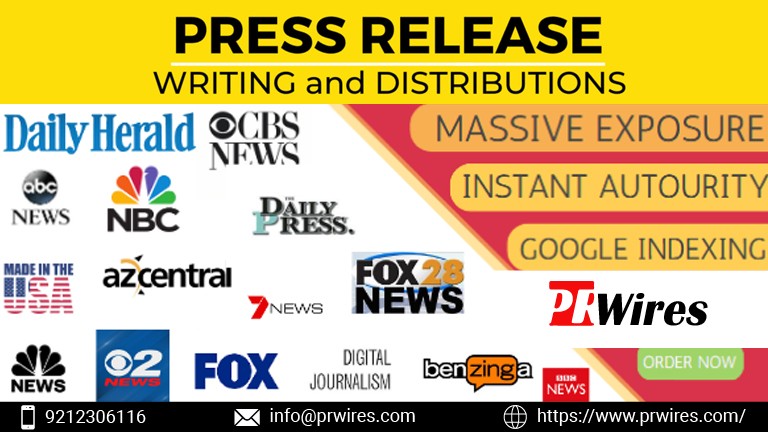The "Crawled – Currently Not Indexed" issue in Google Search Console (GSC) is a common problem that can hinder your website's visibility in search engine results. If your content isn't being indexed, it won't appear in Google's search results, no matter how well it's optimized. This issue can be particularly frustrating because it indicates that Google has found your page but has decided not to index it. Understanding and resolving this issue is crucial for improving your website's SEO performance. In this guide, we'll walk you through six easy steps to fix the "Crawled – Currently Not Indexed" issue in GSC.
Step 1 Understand the "Crawled – Currently Not Indexed" Issue
Before diving into solutions, it's essential to understand what the "Crawled – Currently Not Indexed" status means. This status appears in Google Search Console when Googlebot has crawled your page but hasn't added it to the index. This can happen for several reasons:
- Content Quality: Google may deem the content on the page as low quality or duplicate.
- Technical Issues: There might be technical issues that prevent Google from indexing the page.
- Crawl Budget: Google might not have allocated enough crawl budget to your site, leading to some pages being skipped.
- Noindex Tags or Robots.txt: Misconfigured tags or directives can block indexing.
By understanding the potential causes, you can better diagnose and resolve the issue.
Step 2 Analyze the Affected Pages
The next step is to analyze the pages that are marked as "Crawled – Currently Not Indexed" in GSC. Here's how you can do it:
- Open Google Search Console: Navigate to the "Coverage" report and look for the "Crawled – Currently Not Indexed" section.
- Inspect URLs: Click on individual URLs to inspect the details. Check the "URL Inspection" tool to see if there are any obvious issues.
- Check Content Quality: Review the content on these pages. Is it thin, duplicate, or lacking value? Consider enhancing or rewriting the content if necessary.
- Review Internal Linking: Ensure that the affected pages are linked internally from other relevant pages on your site. This helps Google understand the importance of the page.
By conducting a thorough analysis, you'll have a clearer understanding of why certain pages are not being indexed.
Step 3 Improve Content Quality
One of the most common reasons for the "Crawled – Currently Not Indexed" status is poor content quality. Google prioritizes indexing pages that offer unique, valuable, and relevant content to users. Here's how you can improve content quality:
- Enhance Content: Add more in-depth information, visuals, and resources to your content. Ensure that it answers user queries comprehensively.
- Eliminate Duplicate Content: Use tools like Copyscape to check for duplicate content on your site. If duplicates are found, either remove them or use canonical tags to point to the original source.
- Update Old Content: Regularly update your content to keep it fresh and relevant. Google is more likely to index updated pages.
- Optimize for Keywords: Ensure that your content is optimized for relevant keywords. However, avoid keyword stuffing, as this can lead to penalties.
By enhancing your content quality, you increase the chances of your pages being indexed by Google.
Step 4 Fix Technical Issues
Technical issues can also prevent Google from indexing your pages. Here's a checklist of technical aspects to review and fix:
- Check for Noindex Tags: Ensure that your pages don't have a "noindex" tag in the HTML code. This tag tells Google not to index the page.
- Review Robots.txt File: Check your robots.txt file to ensure that it isn't blocking Googlebot from accessing the affected pages.
- Ensure Mobile-Friendliness: Google prioritizes mobile-friendly websites. Use GSC's Mobile Usability report to identify and fix mobile-related issues.
- Improve Page Load Speed: Slow-loading pages may be deprioritized by Google. Use tools like Google PageSpeed Insights to identify and fix performance issues.
- Check for Redirects: Ensure that there are no unnecessary or broken redirects that could be confusing Googlebot.
By addressing these technical issues, you can remove any barriers that might be preventing Google from indexing your pages.
Step 5 Optimize Your Crawl Budget
Crawl budget refers to the number of pages Googlebot crawls on your site within a given timeframe. If your site has a large number of pages or if Googlebot encounters too many errors, your crawl budget might be limited, leading to some pages being left unindexed. Here's how to optimize your crawl budget:
- Fix Crawl Errors: Regularly monitor the Crawl Stats report in GSC and fix any crawl errors that appear.
- Prioritize Important Pages: Use internal linking to highlight the most important pages on your site. This signals to Google that these pages should be crawled and indexed first.
- Remove Low-Quality Pages: If your site has thin, duplicate, or low-quality pages, consider removing them or merging them with other content. This helps Google focus its crawl budget on higher-quality pages.
- Use Sitemap Effectively: Ensure that your sitemap is up to date and only includes pages you want to be indexed.
Optimizing your crawl budget ensures that Googlebot efficiently crawls and indexes the most important pages on your site.
Step 6 Request Indexing in Google Search Console
After making the necessary changes, it's time to request indexing in Google Search Console. This can help expedite the process of getting your pages indexed. Here's how:
- Use the URL Inspection Tool: Go to the URL Inspection tool in GSC, enter the URL of the page you want to be indexed, and click "Request Indexing." This tells Google to prioritize indexing this page.
- Submit Updated Sitemap: If you've made significant changes across multiple pages, consider submitting an updated sitemap. This helps Google discover and index your pages more quickly.
- Monitor Progress: Keep an eye on the Coverage report in GSC to see if the status of the affected pages changes from "Crawled – Currently Not Indexed" to "Indexed."
By requesting indexing, you can prompt Google to revisit your pages and potentially add them to the index.
Fixing the "Crawled – Currently Not Indexed" issue in Google Search Console is crucial for ensuring that your website's content appears in search results. By following these six easy steps—understanding the issue, analyzing affected pages, improving content quality, fixing technical issues, optimizing your crawl budget, and requesting indexing—you can enhance your chances of getting your pages indexed by Google.
Remember, SEO is an ongoing process, and staying proactive in monitoring and maintaining your site's health is key to long-term success. Regularly check GSC for any new indexing issues, and address them promptly to keep your site performing at its best.
Certainly! Here are some frequently asked questions (FAQs) related to the "Crawled – Currently Not Indexed" issue in Google Search Console:
FAQs
1. What does "Crawled – Currently Not Indexed" mean in Google Search Console?
Answer: The "Crawled – Currently Not Indexed" status in Google Search Console indicates that Googlebot has crawled your page but has not added it to the Google index. This means the page is not available in Google search results. It can occur due to various reasons, including content quality issues, technical problems, or crawl budget constraints.
2. Why is Google not indexing my page even though it has been crawled?
Answer: Google may choose not to index a page for several reasons:
- Content Quality: The content might be deemed low quality or duplicate.
- Technical Issues: There could be technical problems, such as incorrect noindex tags or errors in the robots.txt file.
- Crawl Budget: Your crawl budget might be limited, leading to some pages not being indexed.
- Relevancy and Usefulness: Google may consider the page less relevant or useful compared to other content.
3. How can I check if my page has any technical issues affecting indexing?
Answer: To check for technical issues:
- Use the "URL Inspection" tool in Google Search Console to inspect the affected page.
- Look for "noindex" tags in the HTML code and ensure your robots.txt file is not blocking Googlebot.
- Verify that the page is mobile-friendly and loads quickly.
- Check for any unnecessary or broken redirects.
4. What steps can I take to improve the quality of my content and increase the chances of indexing?
Answer: To improve content quality:
- Enhance the content by adding more valuable and relevant information.
- Eliminate duplicate content or use canonical tags to point to the original source.
- Update old content to keep it fresh and relevant.
- Optimize for relevant keywords, avoiding keyword stuffing.
5. How do I optimize my crawl budget to ensure important pages are indexed?
Answer: To optimize your crawl budget:
- Fix crawl errors reported in Google Search Console.
- Prioritize important pages through internal linking to signal their significance to Google.
- Remove low-quality or duplicate pages to focus the crawl budget on higher-quality content.
- Submit an updated sitemap to help Google discover and index your key pages.
6. How can I request indexing for a page that has been crawled but not indexed?
Answer: To request indexing:
- Use the "URL Inspection" tool in Google Search Console. Enter the URL of the page and click "Request Indexing."
- If you've made significant updates across multiple pages, consider submitting an updated sitemap.
- Monitor the Coverage report to check if the page’s status changes to "Indexed."
7. How long does it typically take for Google to index a page after requesting it?
Answer: The time it takes for Google to index a page can vary. It can range from a few hours to several weeks, depending on factors like the page’s content quality, the site's overall health, and Google's crawl schedule. Regularly check Google Search Console to monitor the status of your pages.
8. What should I do if my page remains in the "Crawled – Currently Not Indexed" status despite following these steps?
Answer: If the page remains in the "Crawled – Currently Not Indexed" status:
- Double-check for any overlooked issues, such as content quality or technical errors.
- Ensure that you are not facing a crawl budget issue.
- Consider seeking advice from SEO professionals or forums for further insights.
- Continue to monitor the page’s status in Google Search Console and make iterative improvements as needed.
Get in Touch
Website – https://www.webinfomatrix.com
Mobile - +91 9212306116
Whatsapp – https://call.whatsapp.com/voice/9rqVJyqSNMhpdFkKPZGYKj
Skype – shalabh.mishra
Telegram – shalabhmishra
Email - info@webinfomatrix.com

%20(1).jpg)
.jpg)
.jpg)
.jpg)






 English (US) ·
English (US) ·